Howard Pyle’s Vision of King Arthur & His Knights
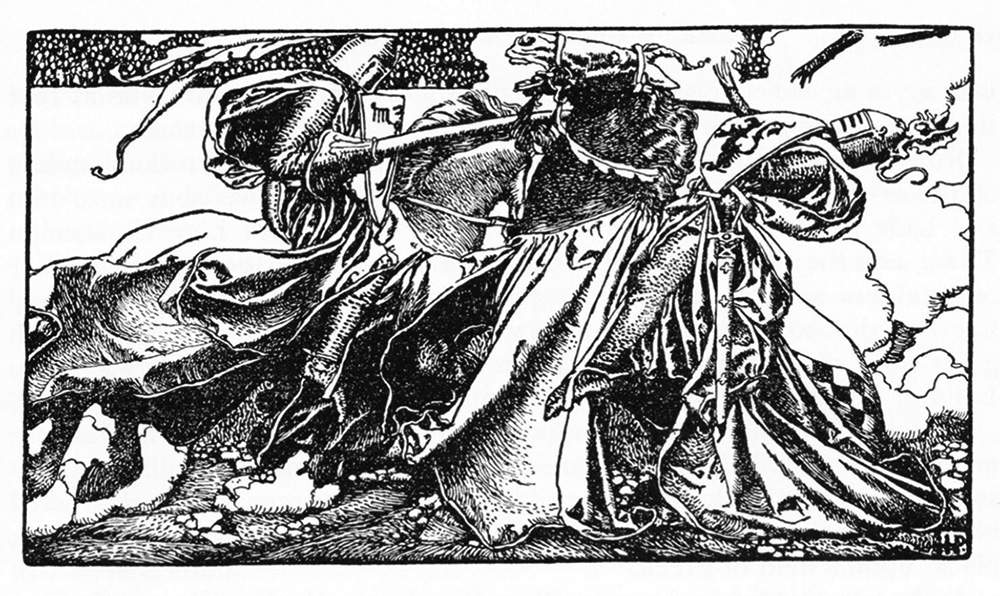
I’ve mentioned this before, but as a kid, I was pretty obsessed with Howard Pyle’s retelling of the King Arthur stories. Throughout his career, Pyle wrote and illustrated stories about many classic characters — Robin Hood, Otto of the Silver Hand, pirates — but his King Arthur stories hold a very special place in my heart, and much of that was due to Pyle’s amazing illustrations and lettering.
My wife recently gave me copies of The Story of Sir Launcelot and His Companions and The Story of the Grail and the Passing of King Arthur as presents, and I’ve taken the opportunity to re-familiarize myself with Pyle’s fantastically detailed images of brave knights, beautiful maidens, and stirring battles.
There are hundreds of illustrations throughout Pyle’s novels, and even the smallest and simplest are beautiful for their elegant, refined style. Below are just a handful of Pyle’s Arthurian illustrations; hopefully, they’ll give you a sense of the man’s talent. (And for my money, if Hollywood ever attempts another King Arthur film, I hope Pyle’s works will serve as something of an inspiration.)
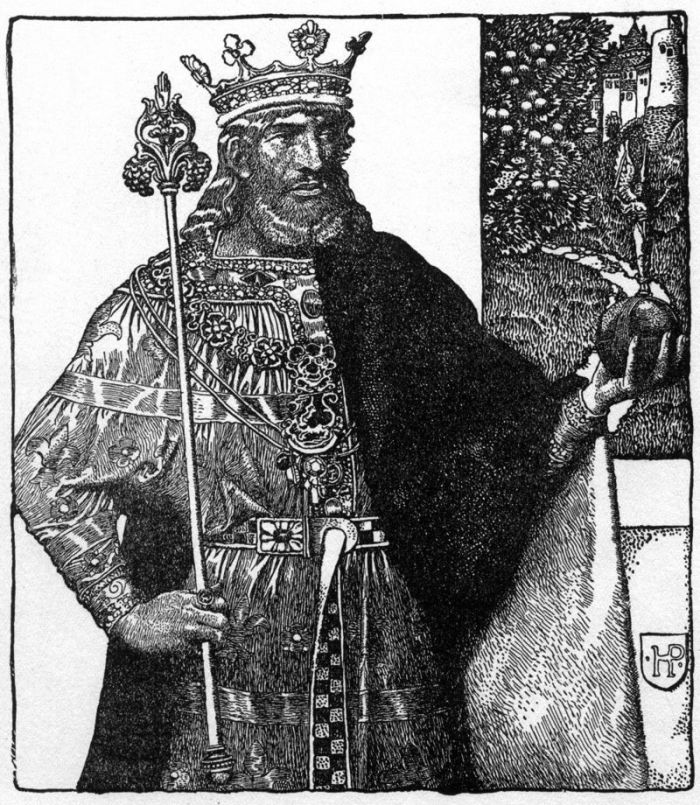
Note the detail on Arthur’s wardrobe and finery, and even in the tapestry hanging on the wall behind the great king.
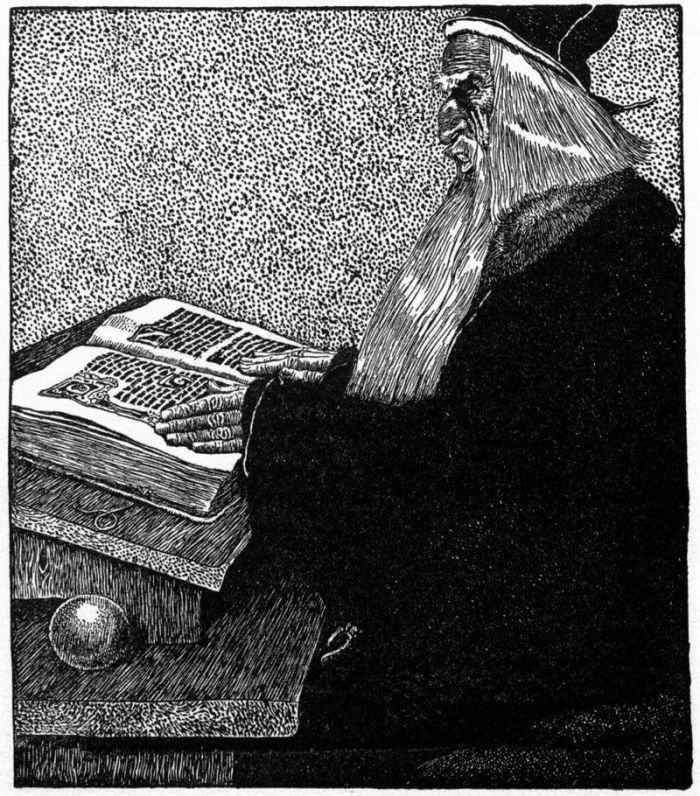
The extremely wizened brow, the bushy beard, the big bulky fur coat… now this is a wizard. And I almost feel as if I could read the arcane words in the massive tome spread before him.
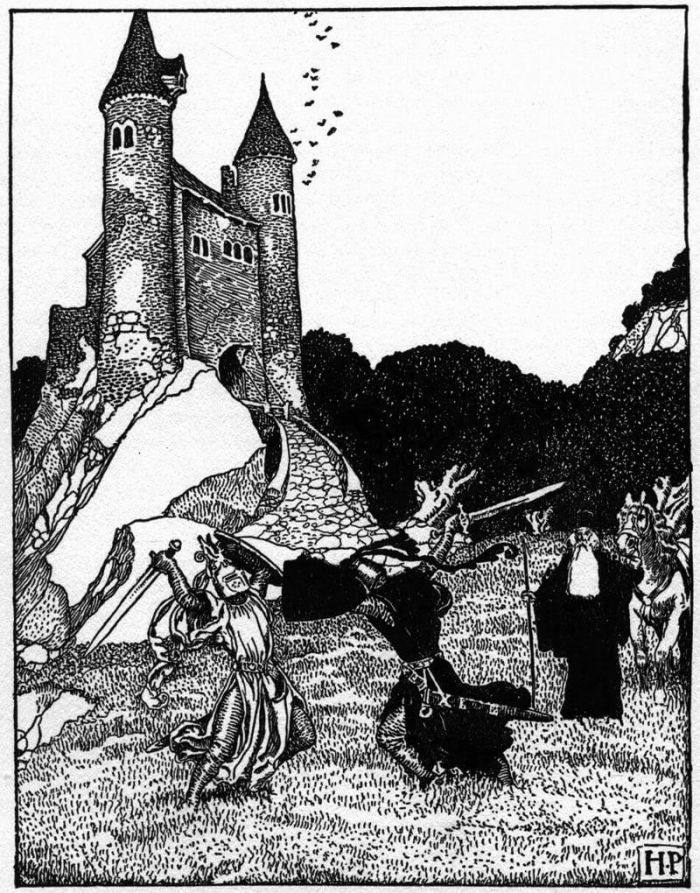
While most of Pyle’s Arthurian illustrations are rather static-looking portraits, there’s a lot of energy in this one. Note the knights’ flowing robes and the ribbons streaming from their helms, as well as the Sable Knight’s upraised sword as he rushes at Arthur. My favorite detail, however, is the castle looming in the background, built on a rocky cliff with birds flying around one its towers. There’s something ominous about it, as if the duel is happening in some remote, godforsaken corner of Britain.
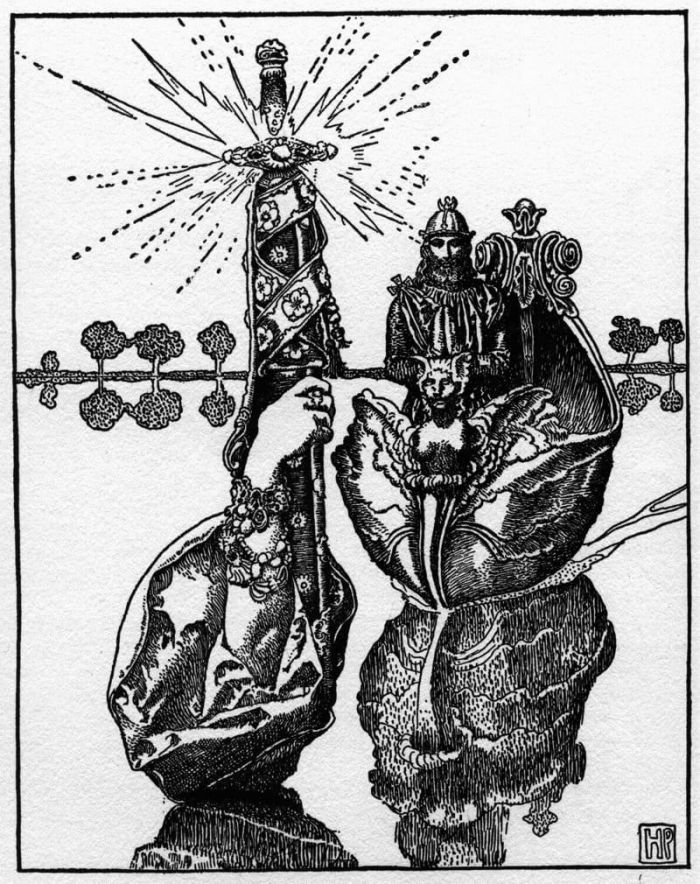
In Pyle’s retelling of Arthurian legend, Arthur receives the magical sword Excalibur from the Lady of the Lake. (In other versions, Excalibur is the sword he pulls from the stone as a youth.) Note the detail in the sword’s jeweled hilt, the engravings on the scabbard, and the flowers on the belt wrapped around it. The negative space of the lake’s glassy smooth surface adds an otherworldly feel to the scene, and makes the arm and sword jutting out of it even more eye-grabbing.
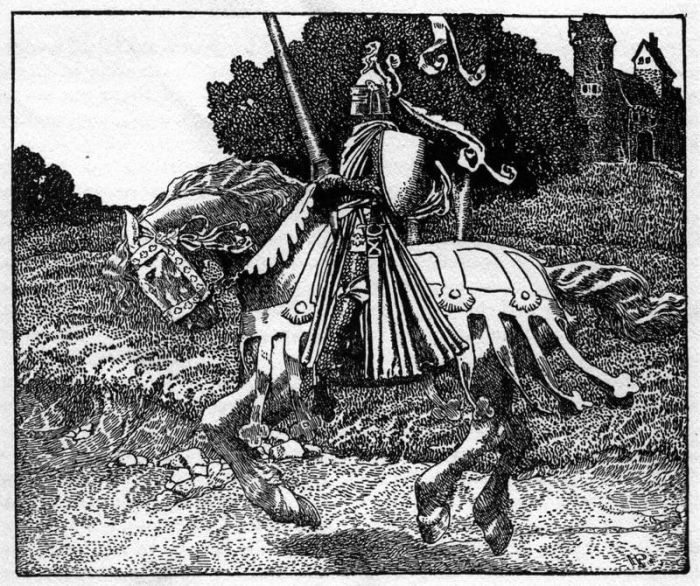
I love the way the horse’s feet float above the ground. Along with the knight’s posture and lance held at the ready, it adds to the illustration’s sense of adventure and chivalry. This is undoubtedly a brave knight heading off on some grand quest for glory.
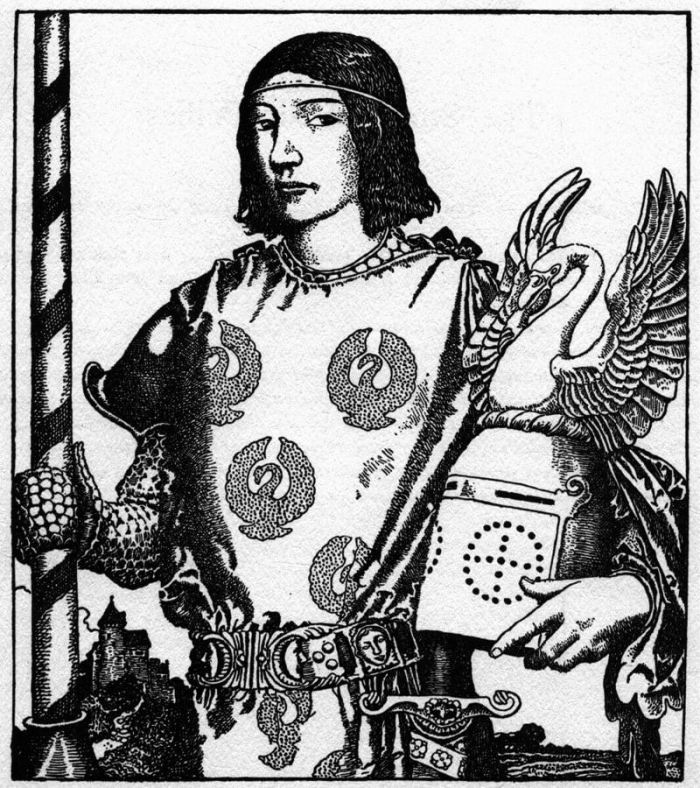
Of all the knights who graced Arthur’s Round Table, Pellias has always been my favorite. Perhaps it’s because he’s so guile-less in Pyle’s tales; he’s the precursor to Percival and Galahad. Or maybe it’s because he’s so sure of his knightly skills that he’s comfortable wearing a giant swan on his head. Other knights may want a lion, or a bear — something fearsome and ferocious — but not Pellias, no sir. A swan will do nicely.
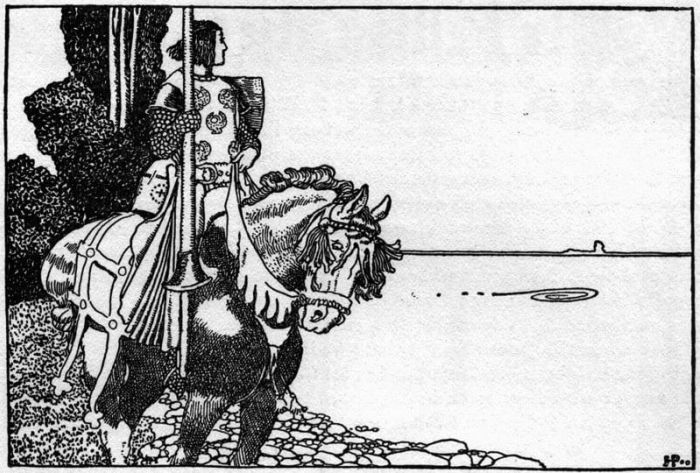
Another illustration of Sir Pellias, this time while he’s on a quest. Again, I love how Pyle’s use of negative space for the water — with the exception of a single, elegant swirl — adds to the scene’s graceful otherworldliness.
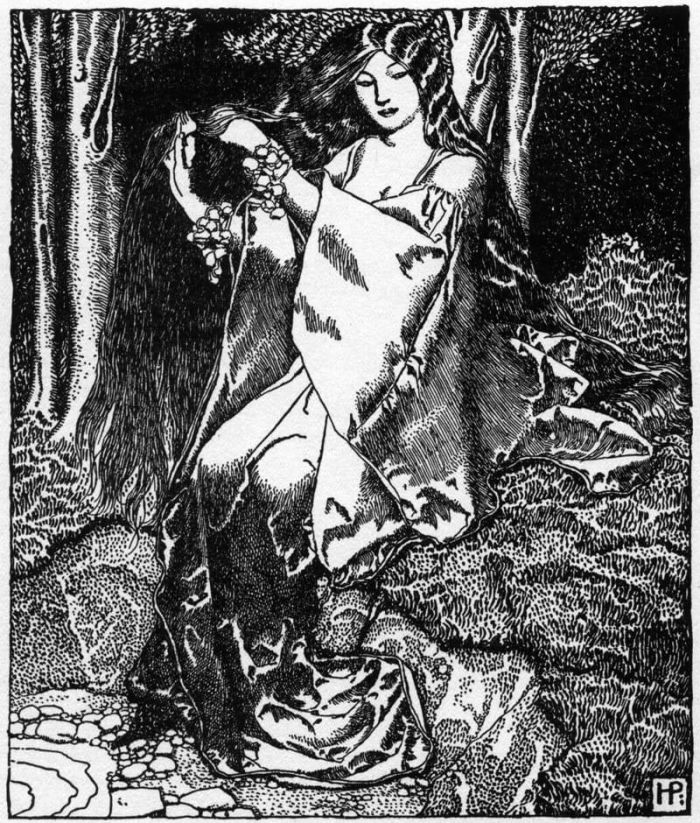
This is one of my favorite Pyle illustrations, that of Nimue, the ethereal Lady of the Lake who gives Excalibur to King Arthur, takes Sir Pellias as her consort, and watches over Sir Launcelot’s upbringing. Look at the way the folds and ripples of her dress shimmer and shine. It looks like she’s clothed in liquid, which makes sense considering the realm she calls home.
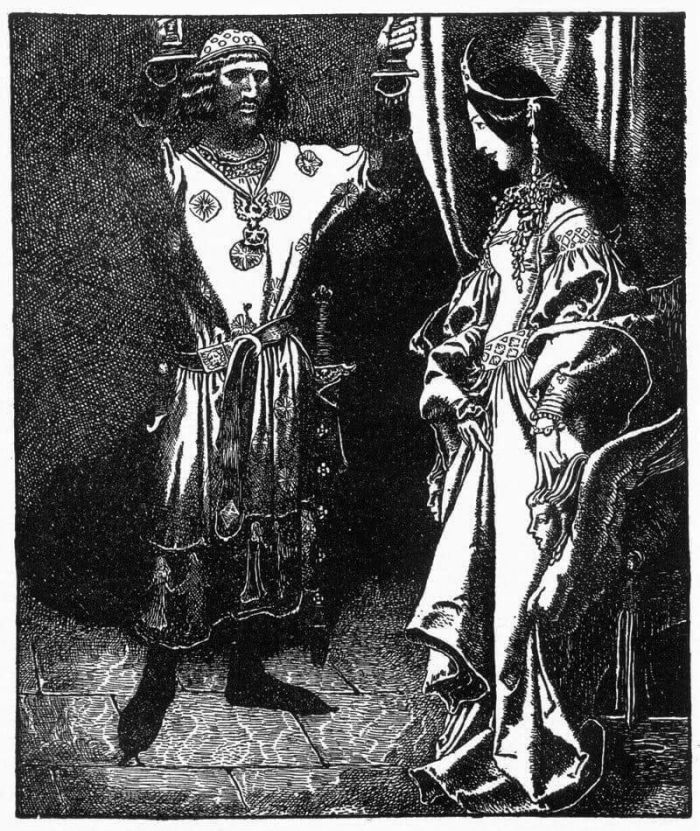
The story of Sir Gawaine and his marriage to a “loathly lady” is one of the most popular Arthurian tales. This illustration captures the moment when Sir Gawaine discovers that the hag he’s married — which he did so out of duty to Arthur — is, in fact, a beautiful woman under a spell. Sir Gawaine emerges from the darkness to find his wife’s true nature revealed; you can see the look of confusion in the shadows on his face.
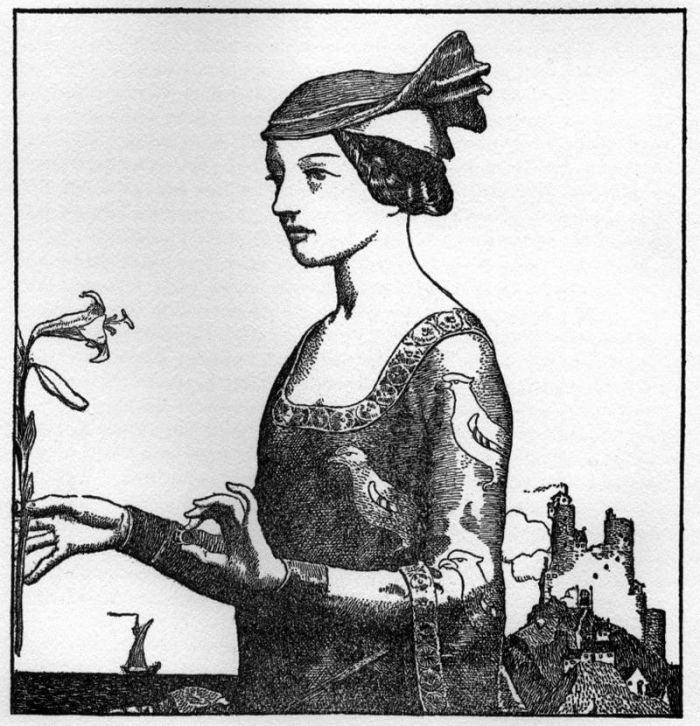
Most of Pyle’s Arthurian illustrations are of brave knights. However, what’s a knight without a fair maiden? I like this illustration because of its simplicity. Most of Pyle’s maidens are dressed in long, elaborate gowns, crowns, and jewelry. This drawing of Lady Yvette the Fair, on the other hand, is relatively restrained, though no less detailed (e.g., her dress’ pattern, the curls in her hair, her hat’s design). She’s holding a ring and a lily in her hands, symbols of devotion and purity respectively — which are fitting given her tragic story as Sir Percival’s lady love.